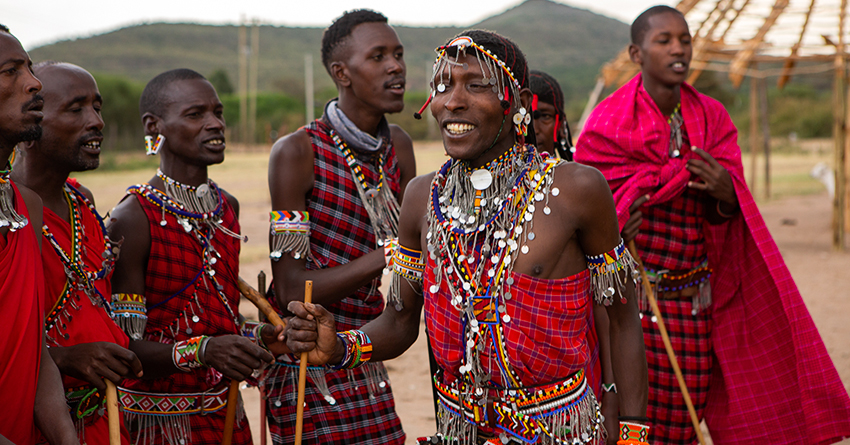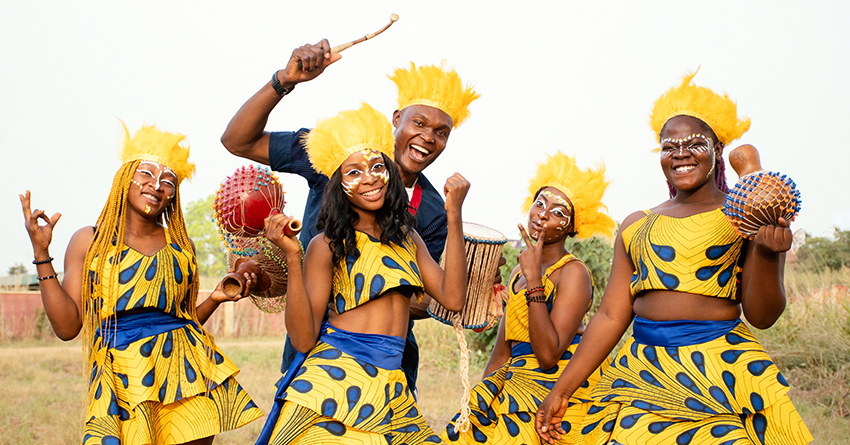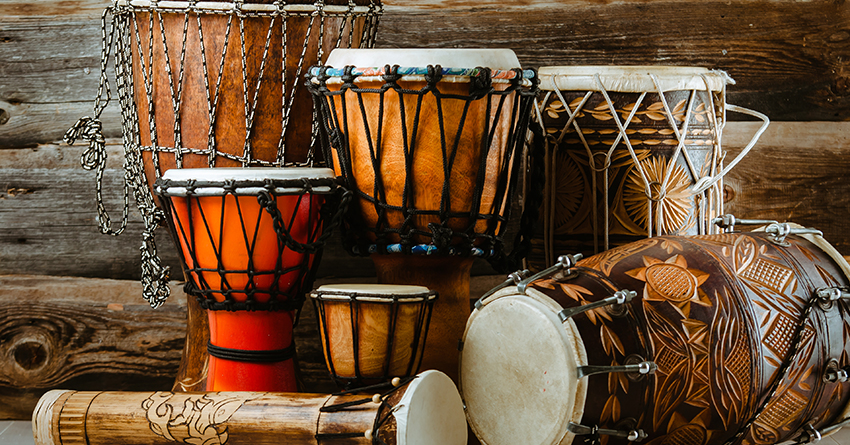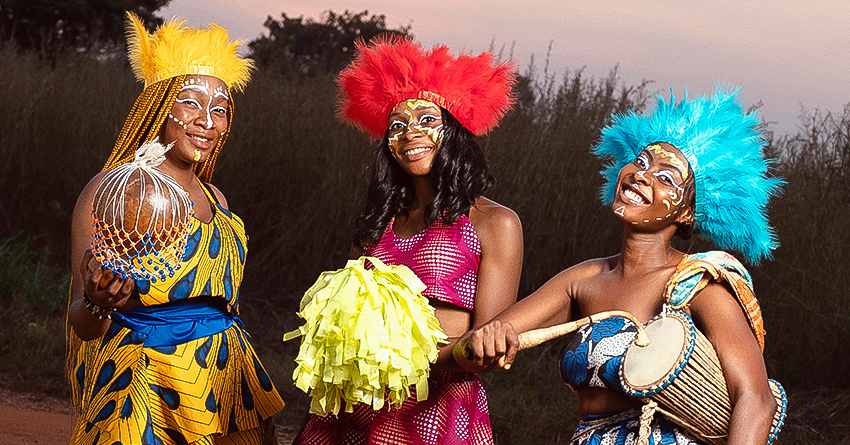The Democratic Republic of the Congo is a land of breathtaking natural beauty and rich cultural diversity. It is the second-largest country in Africa and boasts a mosaic of ethnic groups, each with its own unique customs and traditions. Among the many facets of Congo’s vibrant culture, traditional music and dance hold a special place.
We’ll delve into the captivating world of Congo’s traditional music and dance, exploring their significance, diversity, and the way they reflect the country’s complex history and diverse culture.
The Role of Music and Dance in Congolese Culture

In Congo, music and dance are not merely forms of entertainment; they are integral components of everyday life and play a significant role in various cultural, social, and religious activities.
Here are some of the ways in which traditional music and dance are woven into the fabric of Congolese society:
Cultural Preservation
Music and dance are essential tools for passing down the stories, values, and traditions of various ethnic groups in Congo. They serve as a means of cultural preservation, allowing younger generations to connect with their heritage and elders to share their knowledge.
Social Cohesion
Music and dance are unifying forces in Congo. They bring communities together, foster a sense of belonging, and create an environment in which people can celebrate their shared identity.
Religious Ceremonies
Many Congolese religious traditions incorporate music and dance. For instance, in the Kimbanguist Church, the largest indigenous Christian denomination in Congo, hymns and dances are central to worship services.
Healing and Spiritual Connection
Traditional healers, known as nganga, often use music and dance in their rituals to connect with the spiritual world and promote healing. These practices are deeply rooted in the belief systems of many Congolese communities.
The Diversity of Congolese Music and Dance

Congo’s diversity is reflected not only in its various ethnic groups but also in the wide array of musical and dance styles found across the country. Here are some of the most prominent examples:
Rumba
Congolese Rumba is one of the most famous and influential music styles to come out of the country. With its roots in Afro-Cuban music, Rumba combines African rhythms with Latin influences. Artists like Franco and Tabu Ley Rochereau are celebrated for their contributions to this genre.
Soukous
Soukous, also known as Lingala, is a high-energy dance music style characterized by its upbeat tempo and intricate guitar melodies. It has gained international popularity and continues to influence modern African and world music.
Ndombolo
Ndombolo is a dance style that originated in the 1990s and is characterized by fast-paced, hip-swinging movements. It is often accompanied by music that fuses traditional Congolese rhythms with modern influences.
Traditional Drumming
Drums play a vital role in Congolese music and dance. Different ethnic groups have their own unique drumming traditions, and the rhythms vary from region to region.
Folk Music
Each of Congo’s ethnic groups has its own folk music traditions, often accompanied by distinctive dances. These traditions are deeply rooted in the cultural identity of each group.
Instruments and Rhythms

Traditional Congolese music is rich in diverse instruments and rhythms, each adding a unique flavor to the melodies and dances. Some of the essential instruments include:
Ngoma
The ngoma is a large drum often used in religious and ceremonial contexts. It plays a central role in the spiritual life of many Congolese communities.
Likembe
Also known as the thumb piano, the likembe is a traditional instrument that produces melodious tones. It’s commonly used in both solo and ensemble performances.
Marimba
The marimba is a xylophone-like instrument made from wooden bars. It is used in various regions of Congo to create beautiful melodies.
Guitar
The guitar, especially the electric guitar, is a crucial instrument in modern Congolese music. Guitarists like Franco and Diblo Dibala have left an indelible mark on the music scene.
Percussion
Various percussion instruments, such as congas, bongos, and djembe drums, contribute to the rhythmic complexity of Congolese music.
The Influence of Congo’s Music and Dance on the World

Congolese music and dance have made a significant impact on the global music scene. Here are a few ways in which they have influenced and continue to shape world music:
Latin American Fusion
Congolese Rumba, with its Afro-Cuban influences, played a pivotal role in shaping Latin American music. The fusion of African and Latin rhythms has influenced the development of salsa and other Latin music genres.
World Music
Congolese artists like Papa Wemba and Koffi Olomide have achieved international acclaim and contributed to the popularity of African music worldwide. Their incorporation of Western elements into traditional Congolese music has broadened the appeal of the genre.
Dance Styles
The energetic and infectious dance styles of Congo, such as Soukous and Ndombolo, have inspired dancers and choreographers globally. Elements of these dances can be seen in various music videos and performances around the world.
Collaborations
Congolese musicians have collaborated with artists from diverse backgrounds, contributing their unique sound to a wide range of music genres. These collaborations have helped create cross-cultural bridges and fostered global appreciation for Congolese music.
Challenges and Preservation Efforts
Despite the rich cultural heritage of traditional music and dance in Congo, there are several challenges threatening their preservation and continued vitality. Urbanization, globalization, and the influence of Western popular music have led to a decline in traditional practices in some regions. Additionally, political instability and economic challenges have made it difficult for artists and performers to thrive.
Efforts to preserve and promote traditional Congolese music and dance are ongoing. Various organizations and cultural institutions are working to document, archive, and pass on these traditions to future generations. Educational programs and festivals are also playing a vital role in raising awareness of the cultural significance of these art forms.
Green Congo’s Endeavor
Green Congo, a dedicated NGO, plays a crucial role in preserving and promoting Congo’s cultural heritage. Through various programs and initiatives, they ensure that the nation’s unique traditions continue to thrive and inspire future generations.
Sum-Up
Congo’s traditional music and dance are a testament to the country’s rich cultural heritage. These art forms reflect the diversity of its ethnic groups, the power of music and dance as a unifying force, and the influence of Congo on global music. While challenges persist, the passion and dedication of Congolese artists and cultural preservationists ensure that these traditions continue to thrive and inspire both within the country and beyond its borders.
As we celebrate Congo’s cultural treasures, let us remember the profound significance of traditional music and dance in preserving the country’s unique identity and connecting its people to their heritage.




